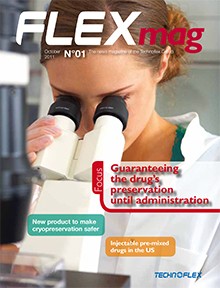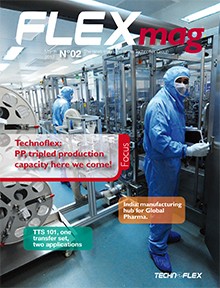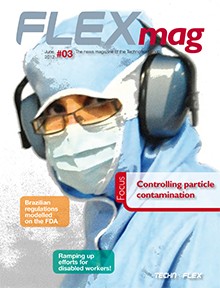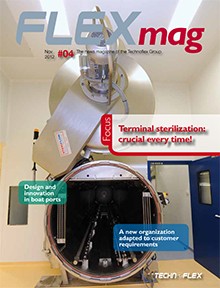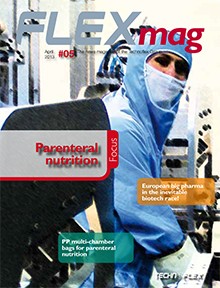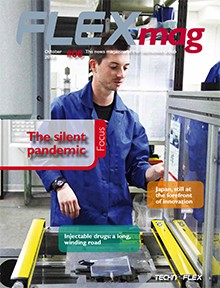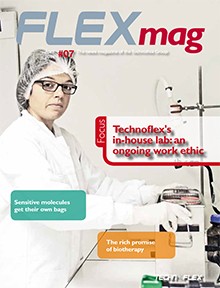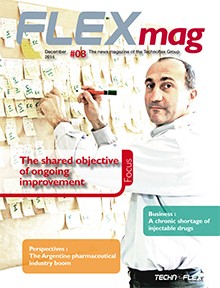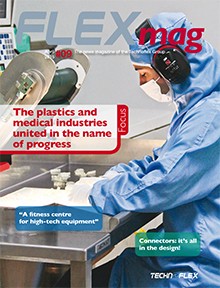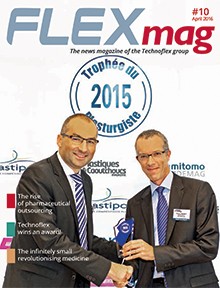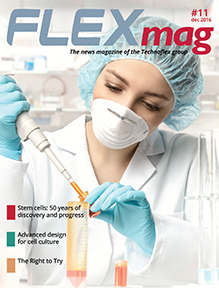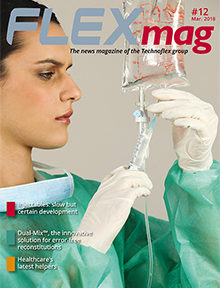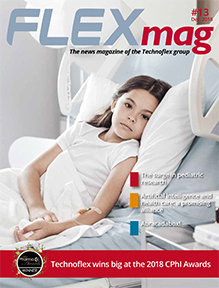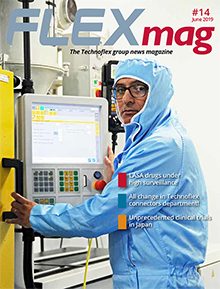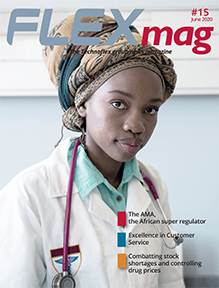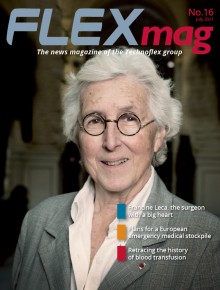The shared objective of ongoing improvement
Keeping full control over a product means mastery of the manufacturing process. Like any industrial firm, Technoflex controls all the complex production techniques used, right from the origin of the product. But we also have to make sure that our processes progress constantly, and must adapt them to any new constraints that emerge. This is where the ongoing improvement procedure comes in. Set up three years ago, it is under the responsibility of an expert from the Industrial Department, Xavier Erguy.
He is like a conductor directing several orchestras at once. His roles range from practical organisation in clean rooms to the implementation of acknowledged methods of industrial optimisation. Xavier mentions the action plan carried out with regard to the position of product bins in the production workshops: they used to be arranged directly around the machines. Discussions held between the production cell manager, the operators and the technician showed that this theoretically “logical” system actually resulted in extra operations and thus time-wasting, and created unexpected difficulties for those concerned. After reflection with the teams, the area was completely reorganised. As a result there are fewer operations, more working space and a calmer, more efficient environment!
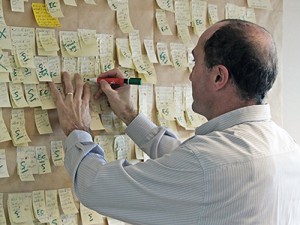 Another participative procedure is the 5S method. At Technoflex it is applied by taking full account of the quality requirements of the products manufactured and the teams involved. In any improvement campaign, solutions can only be provided after a study of the initial situation by the people directly concerned. Each person’s working conditions, visual communication and ideas must be taken on board. In this particular case the storage of raw materials, their visibility and position and physical flows were thus reorganised. “The order, storage methods, cleanliness and visual organisation recommended by the 5S method allow us to build a functional working environment”, indicates Xavier. “And it’s all the more important for us because we work in shifts!”
Another participative procedure is the 5S method. At Technoflex it is applied by taking full account of the quality requirements of the products manufactured and the teams involved. In any improvement campaign, solutions can only be provided after a study of the initial situation by the people directly concerned. Each person’s working conditions, visual communication and ideas must be taken on board. In this particular case the storage of raw materials, their visibility and position and physical flows were thus reorganised. “The order, storage methods, cleanliness and visual organisation recommended by the 5S method allow us to build a functional working environment”, indicates Xavier. “And it’s all the more important for us because we work in shifts!”
Unlike disruptive improvement, which involves a completely fresh start (new equipment, new technology), the Kaizen (1) method used by Technoflex advocates continuous analysis. In line with the company’s regulated framework, it is a mind-set that Xavier promotes on a daily basis. “I use widely acknowledged principles and methods –PDCA, 5M, Pareto (2) – and have adopted a Lean management vision”, he says, “in other words the quest for performance by eliminating waste. Along with Jennifer Hitte, our Safety and Environment Coordinator, we also promote awareness among our teams about waste treatment, pollution and energy consumption.” The target is to adapt to the working environment and to in-house needs, and to be responsive to all the teams and involve them in a shared objective.
Planning, performance, measurement and improvement are the four phases of ongoing improvement. But this procedure cannot be integrated by itself. It is only by harnessing the strengths of each player in the process that it can really produce its effects. It then becomes part of the corporate culture. “We can be proud of what we’ve achieved, but should always be aware of what is still to be done,” concludes Xavier Erguy.
Sylvie Ponlot
___________________
In order to improve the quality of our production, we use the Lean method. This method requires the use of various tools, including the 5M to identify the possible causes of a problem, the 5S to create a functional working environment, and the Deming Wheel (Plan-Do-Check-Adjust) to organise production, until the expected standard is achieved.
___________________
(1) Japanese expression comprising the words Kai (change) and Zen (better)
(2) Pareto Principle, also known as the 80-20 rule (80% of effects come from 20% of the causes)



